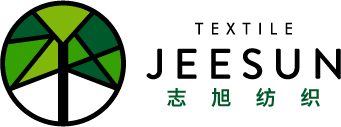Viscose fiber is on the rise. How to solve environmental issues in the production process?
Release time:
2022-08-17
Source:
The growth of consumer purchasing power in emerging economies and the rise of the fast fashion industry have significantly increased the quantity and frequency of clothing purchases. These changes have not only contributed to the booming development of the textile industry but have also intensified the environmental impact of the clothing production process.
Viscose fiber is a type of man-made fiber and one of the earliest chemical fibers to be industrially produced, primarily made from regenerated cellulose or wood pulp. Due to its good moisture absorption, comfort in wearing, and excellent spinnability, it has been widely welcomed by clothing manufacturers and consumers.
Currently, the usage of viscose fiber ranks third among global fiber products. Its biodegradable characteristics make it a substitute for man-made fibers derived from petrochemical raw materials and cotton fibers, which consume a large amount of water during production, making it one of the most widely used fibers in the world today.
China is the third-largest producer of viscose fiber in the world. Although the Austrian Lenzing Group and the Indian Aditya Birla Group occupy the top two positions in the viscose fiber market, Chinese companies dominate the industry in terms of total volume. In 2017, the global annual production of viscose staple fiber (VSF) was approximately 5 million tons, of which 3.6 million tons came from China.
Environmental Concerns of Viscose Fiber
Despite its many advantages, the production of viscose fiber, like other textile products, has a significant environmental impact that cannot be ignored.
Environmental impacts include:
Raw materials mainly come from wood. If not properly managed, deforestation can have devastating effects on ancient forests and endangered tree species. Data collected by the environmental organization CanopyStyle shows that in production, the waste rate of wood used for dissolving pulp in viscose fiber can be as high as 70%. In the viscose fiber used in the clothing industry, 30% of the raw materials come from trees in ancient forests and endangered species.
The wastewater discharged during fiber production contains toxic chemicals that can pollute water resources. In production, companies still use toxic chemicals to convert wood pulp into viscose fiber, and the wastewater discharged may contain pollutants such as sulfuric acid, sulfates, sulfur, and sulfides, as well as metal pollutants like zinc salts. The important chemical used in the viscose fiber processing, carbon disulfide (CS2), is toxic and can cause serious health problems. Insufficiently treated wastewater also contains a large amount of organic matter, which increases chemical oxygen demand (COD) and reduces the oxygen content in water, leading to the death of aquatic organisms.
Although it can cause some pollution, viscose fiber production companies can minimize the environmental impact of the production process through strict control of the supply chain.
To reduce environmental pollution, the European Union issued the Best Available Techniques (BAT) reference guide for polymer material production in 2007. The guide specifies the best technologies required for environmentally friendly production of synthetic materials and cellulose fibers (including viscose fiber), and BAT is also the main reference for EU member states when assessing companies for business licenses.


